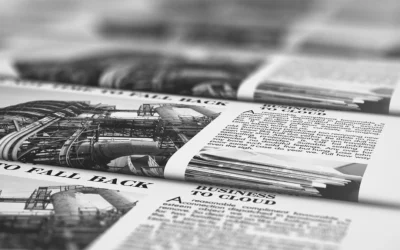At The Printery, every project is handled with care and precision. Our team of seasoned professionals brings decades of experience to the table, ensuring that each print job meets the highest standards of quality.
Cardstock is the foundation of many professional marketing materials that leave a strong impression. The right cardstock makes your brand look polished, durable, and trustworthy.
When you understand what cardstock is and the benefits it brings, you can make smarter choices that help your marketing stand out.

What Is Cardstock?
Cardstock, also called cover stock or pasteboard, is a type of paper that sits between standard paper and heavy cardboard. It is thicker and sturdier than the regular sheets you use in a printer, but it’s still flexible enough to fold, cut, or shape for many uses.
Unlike normal paper, cardstock doesn’t tear as easily, and it can hold its form better. This makes it perfect for marketing materials and other print items that require a more professional appearance and durability.
How Cardstock Differs From Regular Paper
- Thickness and durability: Regular printer paper bends and crumples quickly, while cardstock feels heavier and more solid.
- Look and feel: Cardstock often has a smooth surface that makes colors look sharper and more vibrant. Some versions add texture, metallic tones, or glossy finishes for extra impact.
- Coatings: When cardstock is labeled cover stock, it usually has a shiny coating. C1S means “coated on one side,” while C2S means “coated on both sides.” These coatings give business cards, postcards, and book covers a polished, professional finish.
Common Uses for Cardstock
Because of its durability and versatility, businesses and designers use cardstock for:
- Business cards – strong enough to survive wallets and pockets.
- Postcards and mailers – sturdy enough to travel through the mail.
- Brochure and catalog covers – adds weight and professionalism.
- Playing cards and invitations – feel premium in hand.
- Scrapbooking and crafts – offer a lasting base for creative projects.
To understand how cardstock is chosen for different projects, it helps to look at the way its weight and thickness are measured.
Cardstock Measurements
Cardstock can be described and measured in different ways depending on where you are in the world. Knowing these measurements helps you pick the right thickness and weight for your marketing materials.
Grammage (g/m²) – The Global Standard
Most countries use grams per square meter (g/m² or GSM) to measure paper weight. This number tells you how many grams a sheet of paper weighs if it were exactly one square meter in size. The higher the GSM, the thicker and heavier the cardstock feels.
- Around 135 GSM feels light but is still stronger than printer paper.
- Around 200–250 GSM is medium weight, good for brochures and covers.
- Around 300 GSM and above feels heavy and premium, perfect for business cards or postcards.
Pound Weight (#) – The U.S. System
In the United States, cardstock is often described using pound weight (marked with the “#” symbol). This is based on the weight of 500 sheets (a ream) of paper cut to a standard size used for that paper type. Because different paper types use different base sheet sizes, the pound system can be confusing. For example:
- A 65# cardstock is thicker and heavier than 80# newsprint, even though the number looks lower.
- Typical cardstock ranges from 50# to 110#, which is about 135–300 GSM.
Points (pt..) – Measuring Thickness
Cardstock can also be measured by its actual thickness in thousandths of an inch. In this system, one “point” equals 0.001 inch.
- 10 pt. cardstock is 0.010 inches thick (about 250 GSM).
- 12 pt. cardstock is 0.012 inches thick (about 300 GSM).
This measurement is common in the U.S. printing industry because it gives a direct sense of how sturdy the paper feels in your hand.
Paper Sizes
Along with weight and thickness, cardstock also comes in standard sizes. Many countries use the ISO paper system, which labels sizes with letters and numbers. For example:
- A3 cardstock measures 420 × 297 mm (16.5 × 11.7 inches).
- A4 cardstock (most common for office use) measures 297 × 210 mm (11.7 × 8.3 inches).
Once you know how cardstock is measured and sized, it’s easier to see why it’s such a powerful choice for creating marketing materials that leave a lasting impression.
Top Benefits of Cardstock Printing for Marketing Success
Here’s how cardstock benefits your marketing:
1. Strong First Impressions
You only get one chance to make a first impression. Cardstock feels substantial in someone’s hand, which shows you care about quality.
- Example: When you hand someone a business card printed on 300 GSM cardstock, it feels sturdier than a thin, floppy card. That weight signals professionalism and makes people more likely to hold onto it.
2. Durability That Lasts
Marketing materials should survive more than a quick glance. Cardstock resists bending, tearing, and smudging better than regular paper.
- Example: A postcard printed on 14 pt. cardstock can handle the wear and tear of mailing without arriving damaged, ensuring your message looks as good in the mailbox as it did at the printer.
3. Premium Look and Feel
Cardstock supports finishes like matte, gloss, or textured coatings that make your designs pop. The weight of the paper and the richness of the finish combine to create a premium experience.
- Example: A restaurant menu printed on glossy cardstock looks vibrant under the lights, while a matte finish brochure feels smooth and upscale at a trade show.
4. Better Color Vibrancy
Cardstock holds ink more evenly, which helps colors look brighter and sharper. This makes photos and logos stand out and look more professional.
- Example: A product catalog printed on high-quality cardstock shows off your items with crisp images and bold colors, making the products look more appealing to buyers.
5. Versatility for Many Uses
Cardstock can be used for almost any type of marketing material, from business cards to flyers to product packaging inserts. You don’t have to settle for one size or style.
- Example: You can create matching business cards, thank-you inserts, and event flyers all on different thicknesses of cardstock to keep your brand consistent.
6. Shows Commitment to Quality
When your print pieces look and feel professional, your audience sees your brand as more trustworthy. High-quality cardstock tells people that you invest in your image, which makes them more confident in doing business with you.
- Example: A law firm that sends clients appointment reminders on thick, elegant cardstock reinforces the idea that they are reliable and detail-oriented.
With these advantages in mind, the next step is understanding how the right printing partner can bring out the full potential of cardstock in your marketing.
How The Printery Helps Brands Shine With Cardstock Solutions
Using cardstock is about making sure every print piece you hand out represents your brand at its best. But the results depend on how it’s printed.
That’s where The Printery comes in.
With over three decades of experience, we combine modern print technology with a creative eye for detail to help your materials look their best.
Our team helps you choose the right cardstock weight, finish, and size so your business cards, brochures, or mailers not only look sharp but also feel right in your audience’s hands. Order anything from a small run of postcards to a large batch of product catalogs – we ensure your brand always comes across with professionalism and high-quality results.





0 Comments